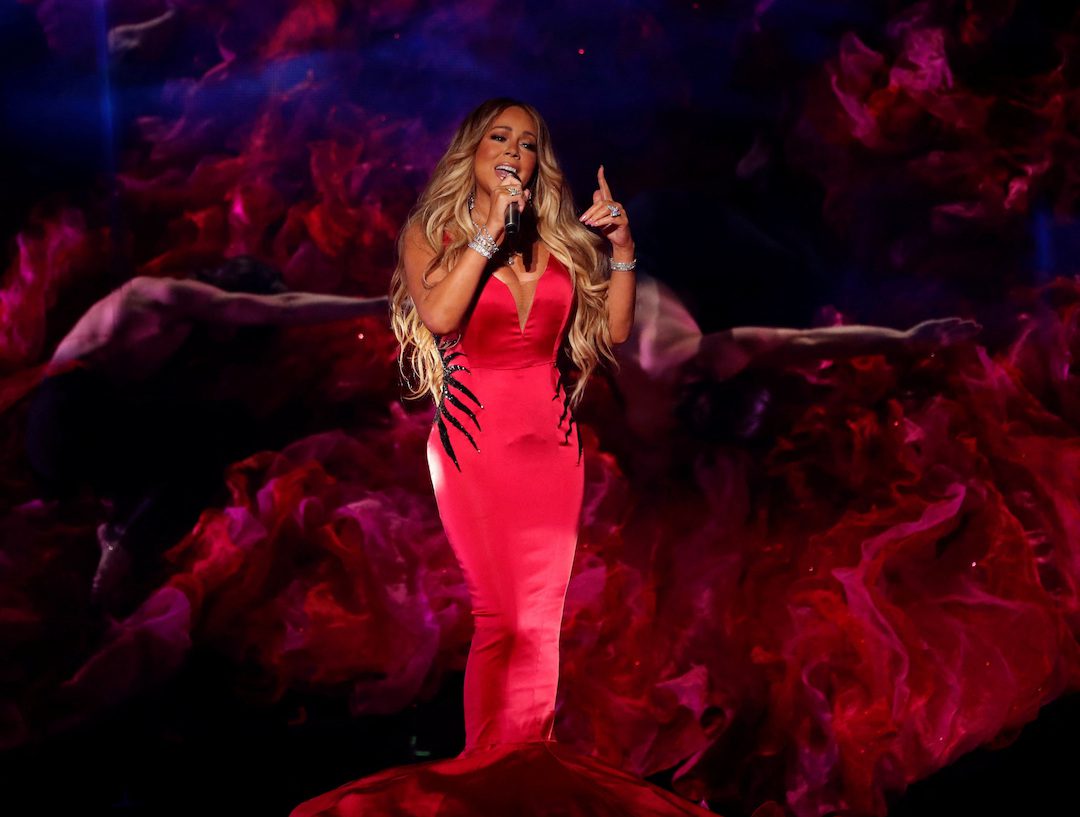Why has this song become a rare modern Christmas hit and what else can we glean from a closer look at the U.S. Billboard Holiday 100?
The Song Components
“All I Want for Christmas is You,” which was first released in 1994, begins with a Christmas-y chime. It’s the sound of a celesta — an instrument featured in Tchaikovsky’s Christmas classic “The Nutcracker.”
Carey’s hit also uses the sleigh bell, which became associated with the holiday season some time after James Lord Pierpont penned “Jingle Bells” in the 1850s.
Then, there are the harmonies. Six chords heard in Carey’s song create sounds we often associate with Christmas, according to composer Vivek Maddala.
“This kind of harmony is atypical in modern pop music but was common in previous eras,” said Maddala.
These harmonic patterns invoke a “music vocabulary” shared with American jazz standards of the early 20th century, an era when many classic Christmas songs were written.
Progress a few more seconds into the song, and you’re met with what co-writer Walter Afanasieff called a “wall of sound.”
Plucky piano chords and a gospel background choir create an upbeat style that is reminiscent of popular music from the 1950s and 1960s, when music production technology had advanced and writers took a more maximalist approach.
Lastly, the bridge of “All I Want for Christmas is You” nods to its contemporaries: 1990s pop music, when the genre began marrying elements of hip hop and R&B. Carey’s vocal riffs and ad-libs are very characteristic of this time, when chart-toppers were often filled with vocal acrobatics.

Carey’s Christmas Rivals
“All I Want for Christmas is You” has earned a consistent spot at the top of the Holiday 100 since the chart’s inception in 2011.
What of other modern success stories?
- It’s not the only Carey hit. “Christmas (Baby Please Come Home),” Carey’s cover of Darlene Love’s Christmas classic and cited inspiration for “All I Want for Christmas is You,” makes an appearance in the chart.
- “Mistletoe” by Justin Bieber began its run head-to-head with Carey’s classic, but has fallen down the chart in recent years.
- Ariana Grande’s hit “Santa Tell Me” saw similar success after its release in 2014. It slowly started climbing the chart again in 2020.
- “Underneath the Tree” by Kelly Clarkson got its start further down the chart, but has become a consistent top 20 hit in recent years.
However, songs written decades ago are the most consistent in the top 10. Brenda Lee’s “Rockin’ Around the Christmas Tree” has even overtaken Carey’s hit for the number one slot over the past two weeks.
Meanwhile, Michael Buble, known for his crooning voice and affinity for 20th century jazz standards, appears as the solo artist on seven songs cracking the top 40 of the chart. All of them are covers – including “It’s Beginning to Look a Lot like Christmas” and “Have Yourself a Merry Little Christmas,” which date from the 1940s and 1950s.
Mining the Archives
The Holiday 100 is quite different from other charts. The same songs chart year after year, reliably and cyclically, and many of the songs that do chart are covers.
A look at the songs that have charted consistently for ten weeks or more on the Holiday 100 shows most of them were written many decades, if not centuries, ago.
Eighteen songs that charted heavily in the last decade were written before 1930. The oldest, “Joy to the World,” was written in 1719 and covered by Nat King Cole in 1960.
“O Holy Night,” a Christmas staple based on a religious French poem from the 1840s, has been covered by Celine Dion, Josh Groban, and Carey (again). All the versions charted in the past decade.
Many of the heavily charting holiday songs were written in the 1930s and 1940s, an era that also produced American jazz standards. Some 41 of the Holiday 100 regulars were written in this era.
These Christmas songs evoke the sound of regular pop music of that time – jazzy, croony, and often a bit melancholy. Think “White Christmas,” a slow song with shifting melodies that immediately sounds like Christmas.
The era of the 1950 and 1960s is the most represented among holiday songs that charted in the last decade, with 44 total tracks.
While still nostalgic, this era’s sound is generally more upbeat than that of the 1930s and 1940s. There were bigger bands, high production values with backup singers, and an infusion of the gospel genre. Think “Christmas (Baby Please Come Home).”
Only 14 heavily charting songs were written in the 1970s and 1980s, the most popular being Wham!’s “Last Christmas.”
And 25 songs that charted consistently were written after 1990. The standout success? “All I Want for Christmas is You,” of course, although “Underneath the Tree” and “Santa Tell Me” are also consistent favourites.







